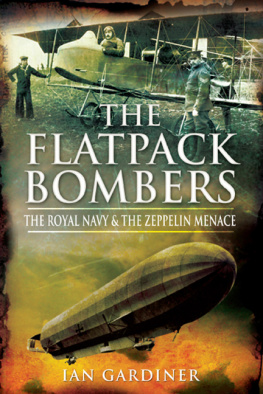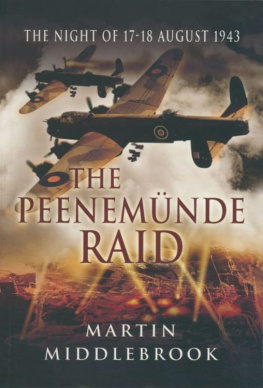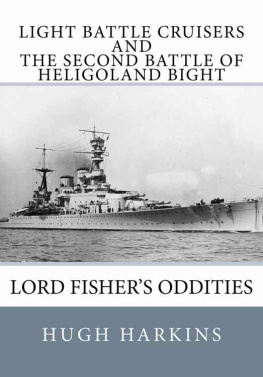
For Sheelagh with much love
Published by
Grub Street Publishing
4 Rainham Close
London
SW11 6SS
Copyright Grub Street 2009
Copyright text Robin Holmes 2009
British Library Cataloguing in Publication Data
Holmes, Robin
The Battle of Heligoland Bight: the Royal Air Force and the Luftwaffes baptism of fire
1. Great Britain. Royal Air Force. Squadron, No. 149 History. 2. World War, 1939-1945 Aerial operations, British. 3. Harris, Paul. 4. Wellington (Bomber) 5. World War, 1939-1945 Regimental histories Great Britain
I. Title
940.544941-dc22
ISBN-13: 9781906502560
Digital Edition ISBN-13: 9781909166868
All rights reserved. No part of this publication may be reproduced, stored in a retrieval system, or transmitted in any form or by any means electronic, mechanical, photocopying, recording, or otherwise, without the prior permission of the copyright owner.
Typeset by Pearl Graphics, Hemel Hempstead
Printed and bound by MPG, Bodmin, Cornwall
Grub Street Publishing uses only FSC
(Forest Stewardship Council) paper for its books.
Contents
Preface
This book records the very earliest air battles between the Royal Air Force and the Luftwaffe. These raids took place in daylight and one proved fateful. On that particular raid I flew a new Wellington, N2980 or R for Robert. Like all Wellingtons she was a joy to fly and an object of affection to her crew. Much is owed to the genius of the late Sir Barnes Wallis, who gave us this superb aeroplane to help us through the dark and difficult times of the early war years. I flew her on that fateful raid to Wilhelmshaven on 18th December 1939, an intensely exciting experience that shattered the long held belief that the bomber will always get through.
I was fortunate that day to survive the battle because Wing Commander (as he was then) Richard Kelletts leading was immaculate. Our ten Wellingtons stuck closely together in tight formation, our guns worked and our very young crews exhibited the true bulldog spirit. In those early days we lumbered along at about 200mph and defended ourselves with guns that were little better than pea-shooters. Today, the young men who guard our island fly at twice the speed of sound and tackle the enemy with sophisticated guided missiles. How different things were in 1939. The Phoney War overshadowed all our operations in those days, when very strict orders forbade us from attacking anything that might result in German civilians being hurt, the last vestige of a decade of appeasement thinking.
A couple of weeks after the disaster of the Battle of Heligoland Bight a squadron of Messerschmitts attacked three Wellingtons on a daylight armed reconnaissance sweep over the North Sea. This was the last nail in the coffin of Bomber Commands cherished philosophy of daylight precision raids by self-defending bomber formations. A whole new technology had to be learned.
Today, the public image of Bomber Command in World War II is one of huge dark shapes taking off at dusk with the survivors limping home at the break of dawn. The Battle of Heligoland Bight 1939 tells us why it had to be done that way by night.
Group Captain P.I. Harris DFC
Introduction to
Vickers Wellington Mk 1A, R for Robert
The contribution of the bomber to the defeat of Nazi Germany was significant, but in securing the unconditional surrender of Imperial Japan it was decisive. The curtain fell on World War II to the drone of a Superfortress over Nagasaki, a curtain that had been raised almost exactly six years earlier to the roar of Wellingtons over Brunsbttel and Blenheims over Wilhelmshaven. Whereas the story of Colonel Tibbets Enola Gay over Hiroshima on 6th August and Major Sweenys Bocks Car over Nagasaki on 9th August 1945 is legend, the story of Squadron Leader Harris and Squadron Leader Lamb over Brunsbttel and Flight Lieutenant Doran over Wilhelmshaven on 4th September 1939 is virtually unknown.
On 2nd September 1945 462 B-29s staged a fly-past over the USS Missouri during the Japanese surrender ceremonies. With a bomb-load of 20,000lbs and a defensive armament of 12 0.5 inch machine guns and a 20mm cannon, the Boeing Super-Fortress was the most modern and efficient Allied bomber when World War II finished.
On 2nd September 1939 the Royal Air Force was placed on War Establishment. With a bomb-load of 4,500lbs and a defensive armament of six .303 inch Browning machine guns, the Vickers Wellington Mk 1A was the most modern and efficient British bomber when World War II started.
The story of the first British bombing raid of the war, of why Bomber Command flew by night and of the Wellington Mk 1A are all closely linked together. It is a story of the Stone Age of strategic bombing. Out of the total 11,461 Wellington bombers produced, Paul Harris old Wimpy from the Battle of Heligoland Bight is now the only one left that fought back against Nazi tyranny and survived. All the others were shot down, ditched in the sea, crashed on training flights or were melted down into saucepans.
Wellington bomber MF628, beautifully preserved in the Royal Air Force museum at Hendon, is a late T Mk 10 that saw no active service in the war.
A very good cottage on the foundations of a castle
G for George skims the surface of the water, lower and lower until the two spotlights meet and the bomb aimer peers through his sights at the twin towers of the Mhne dam. Streams of tracers arc up towards his Lancaster as Wing Commander Guy Gibson steadies his aircraft on its run up to the target. As Barnes Walliss bouncing bomb skips across the surface, the Lancaster claws itself upwards through a hail of flak. A mighty explosion is followed by a huge fountain of water. The dam holds. The rest of 617 Squadron take their turn, and there are more explosions, more fountains of water, till finally the dam face cracks and the deluge pours through. Every time they re-run The Dam Busters you get a lump in your throat, but by May 1943 the writing was on the wall for Nazi Germany. By then Bomber Command was a truly formidable organisation equipped with the most efficient aerial sledgehammers the Lancaster and the Halifax. From then on, in partnership with the US Eighth Airforces Liberators and Flying Fortresses, the cities of Germany were subjected to an ever-increasing pounding that eventually resulted in vast areas being reduced to piles of rubble, the bombers contribution to the final defeat of Nazi Germany. Nostalgia, however, tends to distort our view of history by recalling the better times at the expense of the bad ones. Perhaps that is why the Lancaster and Mosquito are remembered with such affection. Big, tough and menacing fast, daring and deadly these two epitomise todays image of Bomber Command during World War II. They belong to the better times when our backs were no longer against the wall and when, with the help of our American and Russian allies, victory was on the horizon. Model shops abound with plastic kits of Lancasters, Mosquitoes, Halifaxes, Flying Fortresses and Liberators. You have to search hard to find a Whitley or a Wellington. They belong to the dark days when Britain stood alone, invasion and defeat staring us in the face. The Flying Barn Door and the Wimpy however were the two aircraft that laid down the firm foundation upon which both Bomber Command and the US Eighth Airforce built their huge self-defending bomber formations, a concept that relied upon a major British advance in armament technology the power-operated gun turret. More than any other bomber, the Wellington proved this to be a formidable defensive weapon. Until the advent of long-range escort fighters in 1944, big bomber formations had to rely for their survival upon mutual supportive cross-fire from their power-operated gun turrets.
Next page
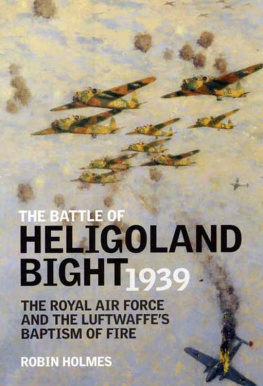

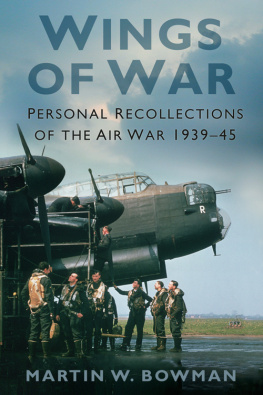


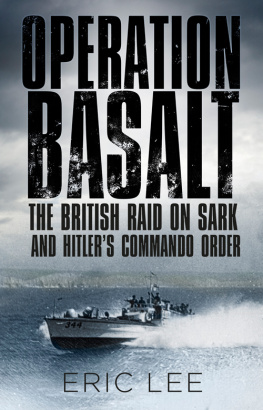
![Bar Wing Commander Guy P. Gibson VC DSO - Enemy Coast Ahead [Illustrated Edition]](/uploads/posts/book/180257/thumbs/bar-wing-commander-guy-p-gibson-vc-dso-enemy.jpg)
